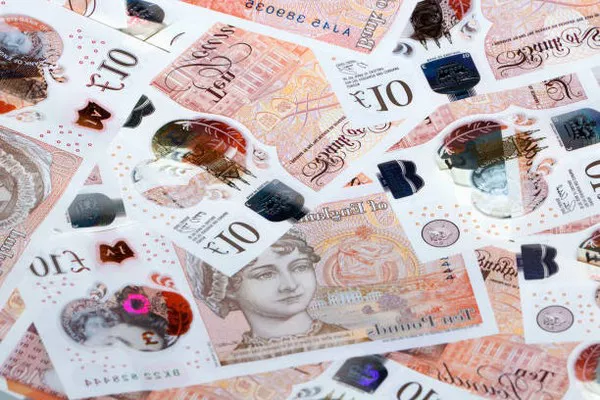The history of British coinage is a narrative of evolution, reflecting societal changes, economic fluctuations, and technological advancements. Among the significant milestones in this evolution is the transition away from silver as the primary material for coins. This shift, spanning several centuries, marked pivotal moments in Britain’s monetary history, shaping its economy and reflecting broader global trends. Understanding when and why Britain ceased using silver in its coinage provides insights into the nation’s economic development and its place in the international monetary landscape.
Early Silver Coinage
Silver has been a cornerstone of monetary systems worldwide for millennia, owing to its intrinsic value, durability, and divisibility. In Britain, the use of silver in coinage dates back to antiquity, with early Celtic tribes producing small, irregular silver pieces for trade. However, it was during the Roman occupation that standardized silver coins, such as the denarius, became prevalent in Britain, facilitating commerce and taxation.
The Medieval Period
The medieval era witnessed the consolidation of silver coinage in Britain, with the introduction of iconic coins like the penny and the groat. Silver pennies, first minted during the reign of King Offa of Mercia in the 8th century, became the backbone of the English monetary system for centuries. These coins bore the image of the reigning monarch and served as a symbol of royal authority and economic stability.
The Tudor Era
The Tudor period marked a significant transition in British coinage, as monarchs sought to assert control over currency production and standardize denominations. During the reign of Henry VIII, the introduction of the silver shilling and the testoon represented innovations in coin design and metallurgy. Silver remained the dominant metal in coinage, reflecting its enduring value in both domestic and international trade.
The Elizabethan Era
Queen Elizabeth I’s reign saw further advancements in British coinage, with the introduction of the silver crown and the half-crown. These large denomination coins were primarily used for ceremonial purposes and international diplomacy, showcasing England’s growing economic and political influence on the world stage. Silver coins continued to circulate widely, facilitating everyday transactions and underpinning the stability of the English economy.
The Great Recoinage of 1816
The early 19th century brought about significant changes to Britain’s monetary system, culminating in the Great Recoinage of 1816. In response to widespread debasement and currency instability, the British government undertook a comprehensive reform of the coinage, transitioning from silver to a bimetallic standard based on gold and silver. The recoinage saw the introduction of new silver coins, such as the crown, the half-crown, and the florin, with standardized weights and fineness.
The Rise of Gold Standard
Throughout the 19th century, Britain gradually shifted towards a gold standard, whereby the value of currency was tied to a fixed quantity of gold. This transition, driven by economic imperatives and international trade dynamics, diminished the role of silver in coinage and relegated it to subsidiary status. While silver coins continued to be minted for circulation, their importance dwindled in comparison to gold-backed currency.
The Interwar Period
The aftermath of World War I brought about further changes to Britain’s monetary policy, as the country grappled with the economic fallout of the conflict. In 1920, Britain officially demonetized silver, ceasing its use as legal tender in most transactions. This decision reflected the diminishing importance of silver in global trade and finance, as well as the practical challenges associated with maintaining a bimetallic standard in an increasingly interconnected world.
The Postwar Era
The latter half of the 20th century witnessed the final stages of Britain’s transition away from silver coinage. In 1947, the silver content of British coins was reduced significantly, reflecting the economic pressures of postwar reconstruction and the rising cost of precious metals. Subsequent debasements further eroded the silver content of coins, paving the way for the introduction of base metal alternatives.
The Advent of Decimalization
In 1971, Britain adopted a decimalized currency system, replacing the traditional pound-shilling-pence system with the decimal pound. This transition necessitated the redesign of British coins, leading to the introduction of new denominations and compositions. While some coins retained their silver content, particularly commemorative and bullion issues, the majority were minted from base metals such as copper, nickel, and brass.
Modern Coinage
Today, silver coins occupy a niche role in Britain’s numismatic landscape, primarily serving as collectibles or investment vehicles rather than circulating currency. The Royal Mint continues to produce commemorative silver coins to mark significant events and milestones, catering to collectors and investors both domestically and abroad. However, the days of silver as the backbone of Britain’s monetary system are long gone, replaced by more practical and cost-effective materials.
Conclusion
The transition away from silver in British coinage reflects a broader evolution in monetary systems and economic paradigms. From its origins in antiquity to its eventual decline in the modern era, silver has played a central role in Britain’s economic history, shaping trade, commerce, and national identity. While silver coins may no longer circulate widely in everyday transactions, their legacy endures in the numismatic heritage of the nation, reminding us of the enduring value of precious metals in shaping human civilization.


